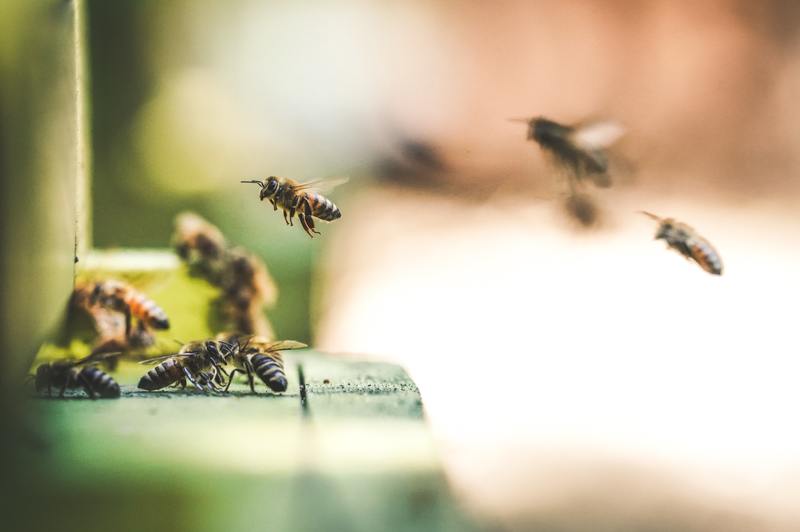Perhaps you found yourself asking “what is biocontrol”. Biocontrol is a method of controlling pest populations using living organisms, such as insects and pathogens.
It doesn’t rely on chemicals and other practices harming the environment.

Natural enemies of pests, also known as biocontrol agents, play a significant role in limiting the number of potential pests, making them nature-friendly alternatives to pesticides that pose severe risks to organisms.
These agents work continuously with little need for additional labor. Keeping beneficial predators and parasites around the garden can help control pests and weed growth and increase crop productivity.
Do you want to get more description about biocontrol and its advantages? Try checking out this article, informing you about what is biological control for pest management.
Recognizing The Role Of Pests’ Natural Enemies
When a non-toxic approach controls pests effectively, pesticide use declines, minimizing the harmful effects a pesticide has. Three categories of pests’ natural enemies are predators, pathogens, and parasitoids.
Predators
Predators are free-living organisms that feed on other animals in the span of their lives.
Many species of predators feed on insects. Insects are a significant part of the diet of many vertebrates, including amphibians, birds, reptiles, fish, and mammals.
These vertebrates feed on insect species and rarely prey on pests unless abundant. Insect predators include ground beetles, rove beetles, lady beetles, flower bugs, and predatory bugs.
Spiders are also predators of insects, mites, and other arthropods.
Parasitoids
Parasitoids are insects at an immature stage that develop within a single insect host, eventually killing the host. They kill their hosts to complete their life cycle from egg to adult stage and only feed on a single host as they reach adulthood.
The adults are usually free-living and consume other resources like plant nectar and honeydew.
Pathogens
Pests can be infected by fungi, bacteria, protozoans, and viruses that cause diseases. These diseases decrease the growth rate of insect pests, slow down their reproduction, and kill them.
Diseases can spread and multiply through a swarm of insects, especially when their density is high.
Adult female parasitoids lay eggs inside the host by inserting their ovipositor directly through the host’s body wall. They’re also capable of attaching their eggs outside the host’s body.
Parasitoid species include flies, wasps, beetles, and worms.
Approaches To Biocontrol
There are three basic approaches to biocontrol: importation, augmentation, and conservation. Every approach can be used individually or in combination with other methods.
1. Importation
It is most commonly known as classical biological control. It involves sending a pest’s natural enemy to a new place where they do not occur inherently.
A natural enemy must have the ability to thrive and keep pace with changes to the habitat. Part of the mission of biological control scientists is to search for exotic organisms that can prevent pests.
Combining pests with their natural enemies is a sustainable method of suppressing them. The parasite Neodusmetia successfully decreased the population of Rhodesgrass mealybug in Texas after being largely distributed by an airplane.
Another successful importation approach is the biological control of alfalfa weevil. Biocontrol experts first detected it in Utah in 1904 and a second introduction on the east coast in 1951.
Unfortunately, by 1970, the weevil had set its foot on 48 neighboring states from the USA and became a harmful pest of alfalfa. To solve this issue, USDA ARS personnel were set out in a foreign exploration in Europe, leading to the importation of 12 parasitoid species.
2. Augmentation
In the context of biocontrol, augmentation is the use of natural enemies (parasites, predators, and pathogens) to control pests. This method uses commercially available biocontrol agents applied well-timed to prevent population increases.
Research has demonstrated that releasing natural enemies can be efficient in interiorscapes and greenhouses. However, outdoor releases of these agents are affected by unstable environmental conditions.
These natural enemies can be released all at once or over some time to reduce pests or keep the pest’s population low. The existing environment can be enhanced to be more suitable for them.
There are two types of releases: inundative release and inoculative release. Inundative release is the single release of a natural enemy in large numbers.
In an inundative release, release can be small or large. A natural enemy does not reproduce and become established, and the goal is reducing pest numbers in a single release.
In an inoculative release, natural enemies are released repeatedly in small quantities. Natural enemy establishes their population and effectively controls a pest.
3. Conservation
Conservation of natural enemies is the third approach of biological pest control. It involves identifying the factors minimizing the effectiveness of a natural enemy and changing them to maximize the effectiveness of these beneficial species.
Conservation involves modifying factors affecting the natural enemies. It also includes supplying them with the resources they need in their environment.
Many factors affect the effectiveness of a natural enemy. Cultural practices like tillage or the burning of crop debris can eliminate natural enemies.
Making sure that the ecological needs of the natural enemy are met in the cropping environment is an effective way to conserve natural enemies. Natural enemies must have access to food resources, alternate hosts, and appropriate climates to be effective.
Conclusion
What is biocontrol? It is a pest control method using insects and pathogens to manage pest populations.
Biocontrol agents are the natural enemies of pests and are divided into three categories: predators, parasitoids, and pathogens. Common approaches to biocontrol are importation, augmentation, and conservation.
If you want more information about pest control, you may check this article, explaining how long does pest control last.
